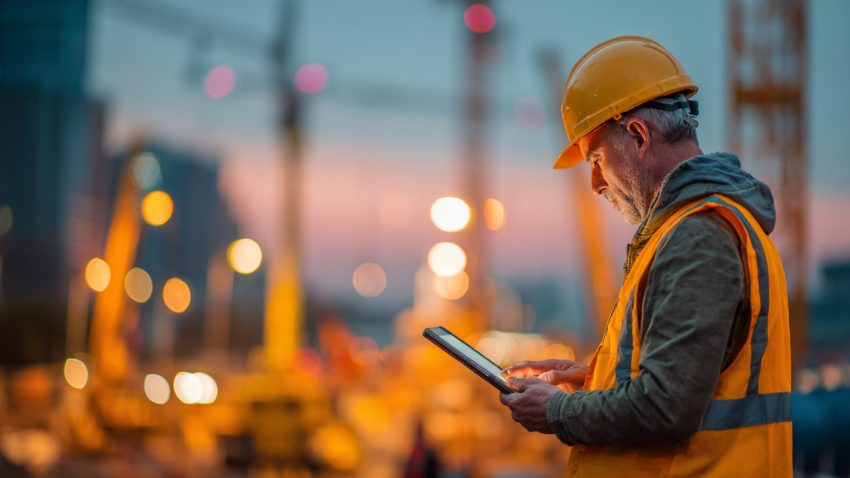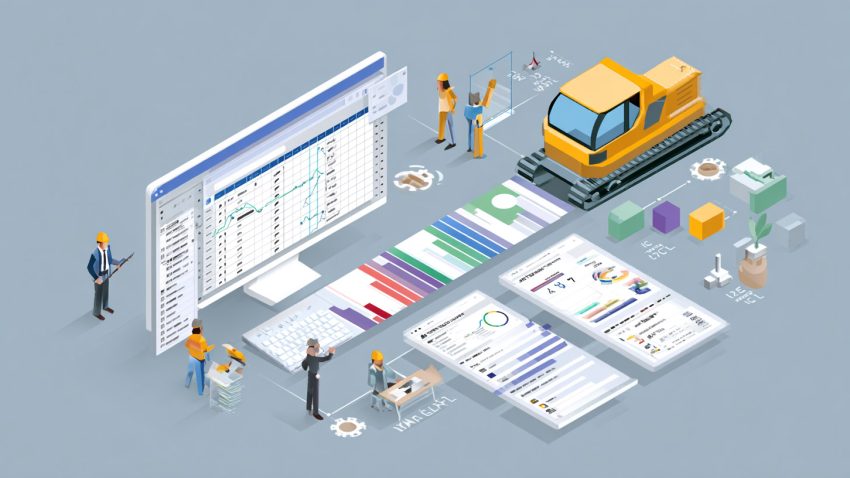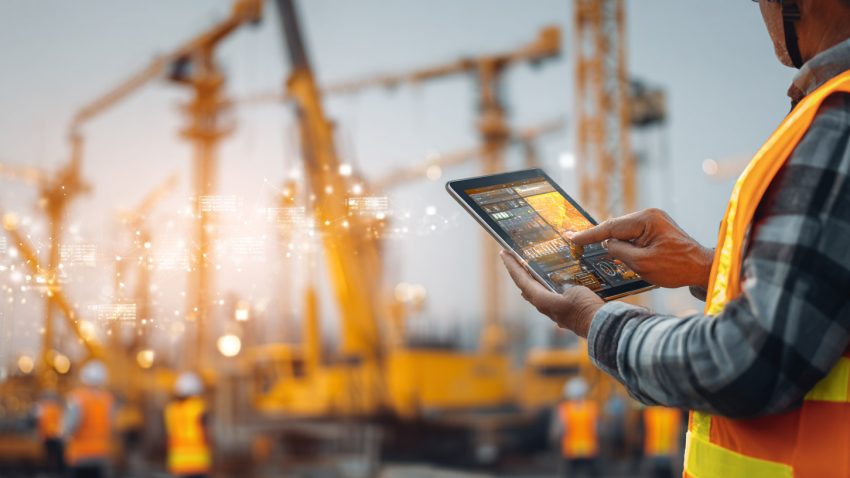Top 15 Construction Safety Management Trends in 2024: What You Need to Know
Table of Contents:
The Evolution of Construction Safety
The construction industry is constantly advancing, not just in terms of architectural innovation and building technologies, but also in the crucial area of on-site safety. Historically, construction has been one of the more hazardous professions, with a high number of accidents and fatalities compared to other sectors. However, the past few decades have witnessed a transformative shift towards prioritizing worker safety, driven by both ethical considerations and regulatory demands.
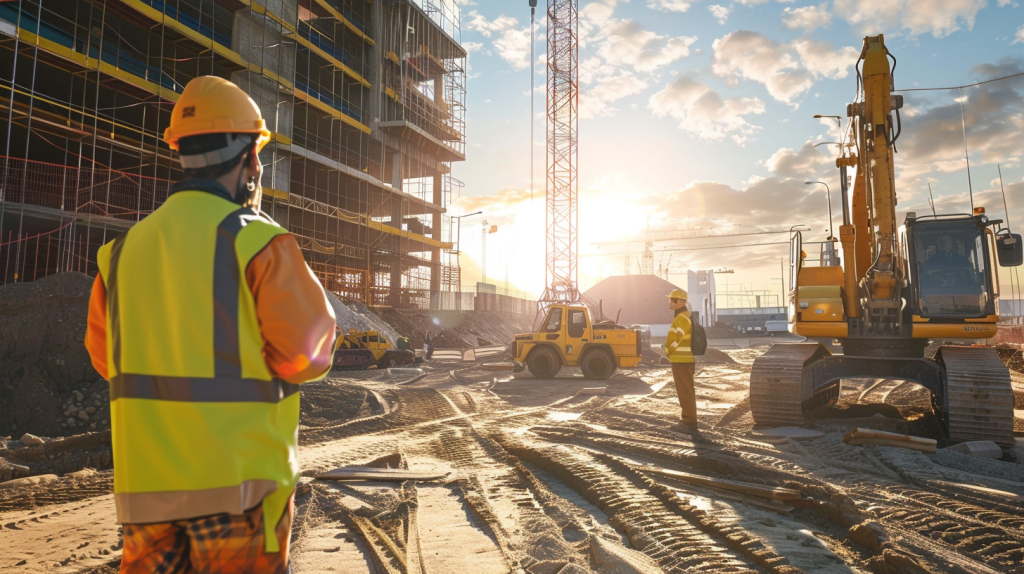
As we navigate through 2024, it’s evident that the safety landscape in construction is evolving more dynamically than ever before. This evolution is not just about adopting new rules; it’s about changing the culture on construction sites. It involves integrating technology, improving training methodologies, and fostering a workplace environment that emphasizes well-being alongside productivity. By understanding these shifts, companies can better prepare themselves for the future, ensuring that safety remains at the forefront of their operational strategies.
In this extended introduction, we’ll dive deeper into the catalysts for these changes, explore the impact of global trends on local practices, and discuss how companies can implement these insights to create safer construction environments.
A Shift Towards Proactive Safety Measures
Traditionally, the construction industry reacted to accidents by implementing changes to prevent future occurrences. Today, the approach is becoming increasingly proactive. There is a significant shift towards identifying potential hazards before they result in harm. This shift is facilitated by the adoption of technologies such as AI and machine learning, which help predict risk areas and unsafe conditions by analyzing vast amounts of data collected on-site.
Moreover, regulatory bodies worldwide are tightening safety norms, pushing construction companies to adopt these advanced technologies not just as an option but as a necessity. These changes are also reflective of a more profound societal shift towards valuing human life and well-being, influencing companies to invest more heavily in safety measures to maintain a positive public image and attract the best talents who prioritize safe working environments.
The Role of Technology in Safety Management
The integration of technology in construction safety management cannot be overstated. From wearable tech that monitors workers’ health metrics to drones that inspect hard-to-reach areas, these tools are becoming indispensable in the modern construction site. For instance, wearable devices can send real-time health data to supervisors, enabling immediate medical responses in emergencies like falls or cardiac events.
Additionally, the use of Building Information Modeling (BIM) has revolutionized project management and safety compliance. BIM creates digital representations of physical and functional characteristics of places, which construction professionals use to analyze and assess the building aspects before they are built. This not only helps in improving the quality of the buildings but also ensures that the construction processes do not overlook safety protocols.
Enhancing Safety Through Training and Culture
While technology plays a critical role in enhancing safety, the human element remains central. There is an increasing emphasis on creating a safety-centric culture within construction companies. This culture is cultivated through continuous training and development programs, which equip workers with the knowledge and skills needed to navigate complex and hazardous construction environments safely.
Training programs are now more interactive and practical, often using virtual reality (VR) to simulate safety scenarios. These simulations allow workers to experience potentially dangerous situations in a controlled environment, enhancing their ability to respond effectively in real life. Such training not only helps in reducing accidents but also boosts worker confidence and competence.
Furthermore, companies are realizing the importance of leadership in fostering a safety culture. Effective safety leaders are not just enforcers of rules but advocates for the well-being of their teams. They are instrumental in driving the message that safety goes beyond compliance; it is about creating an environment where each worker is seen, heard, and valued.
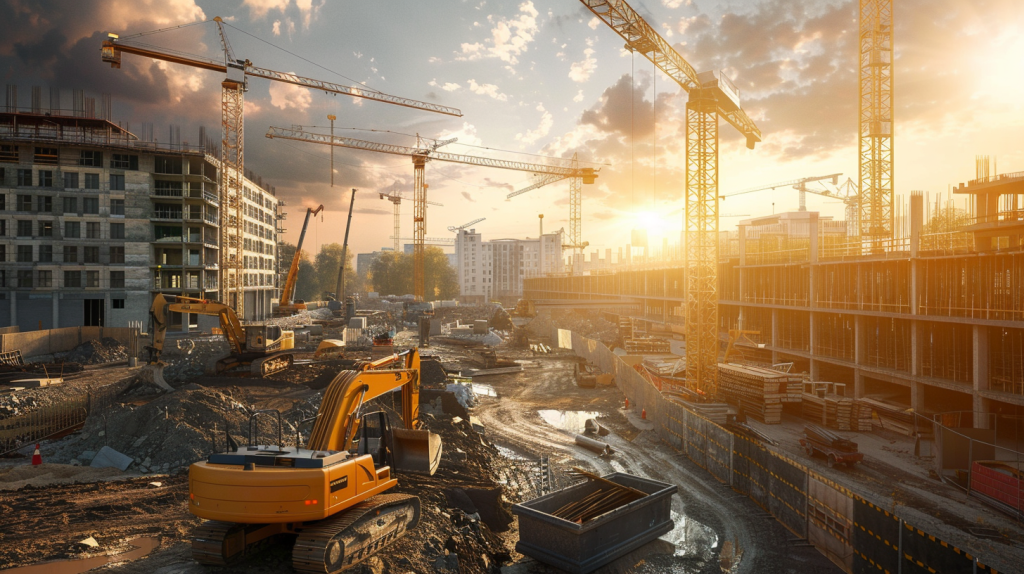
The Evolution of Construction Safety
Safety in the construction industry has always been a priority, but the approach and technologies we use to ensure safe environments are continuously evolving. As we step into 2024, it’s clear that new trends and innovations are shaping the way construction companies manage safety on-site. This comprehensive guide will explore the top 15 safety management trends in the construction industry, providing insights into how you can adapt these strategies to enhance safety in your projects.
1. Emphasis on Mental Health and Well-being
The construction industry is increasingly recognizing the importance of mental health. Stress, anxiety, and other mental health issues can significantly impact worker safety and productivity. In 2024, more companies will implement programs and workshops focused on mental health, aimed at reducing stress and improving the overall well-being of their workforce.
2. Advanced Personal Protective Equipment (PPE)
Technological advancements have revolutionized PPE. In 2024, we will see wider adoption of smart helmets, which can monitor vital signs and environmental hazards, and augmented reality (AR) goggles that can display safety information in real time. These tools not only provide better protection but also enhance the worker’s situational awareness.
3. Predictive Analytics in Risk Assessment
Predictive analytics is becoming a critical tool in identifying potential risks before they lead to accidents. By analyzing data from various sources, including past incidents and real-time site conditions, companies can predict and mitigate risks more effectively. This proactive approach is set to become a standard in safety management.
4. Increased Use of Drones for Site Inspection
Drones offer a safe and efficient way to inspect construction sites, especially in areas that are difficult or dangerous for humans to access. In 2024, drone technology will be more integrated into daily operations, used for everything from surveying job sites to monitoring worker compliance with safety protocols.
5. Enhanced Focus on Training and Development
Ongoing training is crucial for maintaining high safety standards. This year, expect to see more interactive and virtual reality (VR) training programs that allow workers to experience realistic scenarios and practice their responses to emergencies without any real-world risks.
6. Rise of Safety Apps
Mobile applications dedicated to safety management are becoming increasingly popular. These apps can provide workers with easy access to safety manuals, checklists, and incident reporting tools, all from their smartphones. This instant access helps ensure that all team members are up-to-date with the latest safety protocols.
7. Integration of Wearable Technology
Wearable technology continues to be a significant trend in construction safety. Devices that track workers’ locations, movements, and even biometric data help managers monitor safety compliance and quickly respond to potential health issues like heat stress or fatigue.
8. Sustainability and Safety
There is a growing link between sustainability and safety in construction. Sustainable practices often lead to safer job sites—less waste and reduced use of hazardous materials contribute to a lower risk of accidents and injuries. Expect sustainability to be a key component in safety strategies.
9. Emphasis on Safety Leadership
Leadership plays a critical role in the implementation of effective safety practices. Companies are now investing in training leaders specifically for safety management, ensuring that safety-first mindset trickles down from the top and is embraced by all employees.
10. Collaborative Safety Programs
Collaboration between various stakeholders, including subcontractors, architects, and engineers, is crucial for comprehensive safety planning. In 2024, integrated safety programs that involve all parties from the project’s outset will become more common, enhancing communication and overall safety compliance.
11. Regulation and Compliance Software
As regulations become stricter and more complex, the use of software to manage compliance is growing. These systems help ensure that projects adhere to the latest safety codes and regulations, reducing the risk of legal issues and enhancing overall safety management.
12. Remote Monitoring and Real-time Communication
The ability to monitor job sites remotely and communicate in real-time has become invaluable. Technologies such as IoT (Internet of Things) enable supervisors to get instant updates on various aspects of the construction site, allowing for swift action when needed.
13. Safety Inclusivity
Safety inclusivity focuses on creating safety protocols that accommodate the diverse needs of all workers, including those with disabilities. This approach not only promotes fairness but also enhances safety by ensuring that every team member is adequately protected.
14. Construction Site Automation
Automation in construction, such as the use of robots and automated machinery, reduces the need for human workers in the most hazardous environments. As these technologies advance, they will play a larger role in keeping construction sites safe.
15. Enhanced Incident Investigation
Finally, the methods used to investigate incidents when they do occur are becoming more sophisticated. Techniques such as digital reconstruction and data analysis provide deeper insights into what went wrong, helping prevent future incidents.

StruxHub
Discover how StruxHub can revolutionize your construction management. Contact us today!
Building a Safer Tomorrow
The construction industry in 2024 is set to be safer than ever before, thanks to technological advancements and a growing emphasis on comprehensive safety practices. By adopting these trends, construction companies can not only comply with regulations but also protect their workforce more effectively. Remember, a commitment to safety is a commitment to the success of every project. With these trends, you’re not just building structures; you’re building a culture of safety that lasts.
StruxHub is at the forefront of transforming construction management with its innovative, user-friendly platform designed to streamline operations, enhance on-site safety, and improve project efficiency. By integrating cutting-edge technology with practical, real-world applications, StruxHub provides a holistic solution to the complex challenges faced by today’s construction professionals. Our platform is built to ensure seamless collaboration, meticulous resource management, and unparalleled project oversight, making construction projects more manageable and predictable than ever before.
StruxHub’s Key Features and Benefits:
- Advanced Delivery Management: Automate and optimize your delivery schedules, ensuring materials arrive just in time, every time.
- Site Communication: Utilize georeferenced maps and instant messaging to keep every team member informed and aligned.
- Construction Materials Management: Track inventory levels and manage materials procurement with ease, reducing waste and avoiding project delays.
- Construction Safety & Inspection Workflows: Implement customizable mobile forms for conducting safety inspections and managing compliance documentation effortlessly.
- Short-Term Scheduling: Visualize project tasks with detailed floor plans, linking each activity to specific locations for better planning accuracy.
- Construction Resource Management: Efficiently allocate personnel and equipment, maximizing productivity and reducing idle time.
StruxHub’s Product Offering:
- StruxHub Deliveries: Simplifies the coordination of incoming deliveries, ensuring materials and equipment are precisely timed to project needs.
- StruxHub Logistics: Offers intelligent site logistics planning, from crane scheduling to space allocation, for smoother operations.
- StruxHub Safety: Elevates on-site safety standards with easy-to-use tools for inspections, permits, and incident reporting.
- StruxHub Scheduling: Enhances project timelines with intuitive scheduling tools that ensure tasks are completed efficiently and on time.
With StruxHub, construction companies can look forward to a streamlined, more efficient project execution that delivers on time and within budget. Embrace the power of innovation and take your construction projects to the next level.
Don’t miss out on the opportunity to optimize your construction management processes with StruxHub. Sign up for a free demo today. Let’s build smarter, together.

